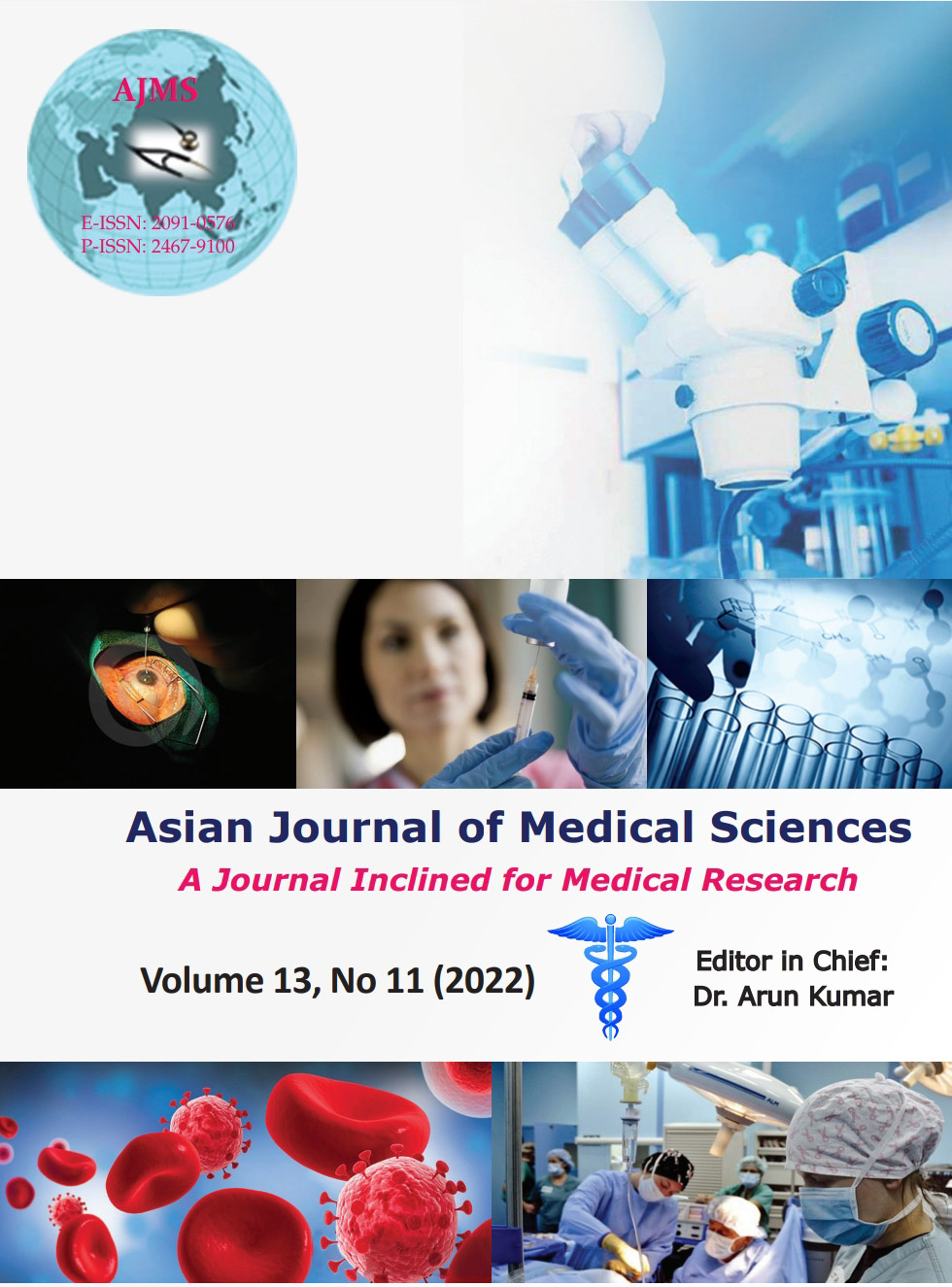Study on spectrum of nephrotic syndrome in adults in a tertiary care hospital of eastern India
Keywords:
Nephrotic syndrome; Oliguria; Edema; AlbuminuriaAbstract
Background: Nephrotic syndrome is a very common yet perplexing kidney disease whose spectrum has undergone a gradual change globally over time. Within various Asian countries, the spectrum of adult nephrotic syndrome varies according to the place of origin.
Aims and Objectives: The purpose of this study is to know the clinical presentation, laboratory abnormalities, histopathological spectrum of adult nephrotic syndrome, and its changing trends compared to previous studies.
Materials and Methods: This observational cross-sectional study includes 50 cases of biopsy proven nephrotic syndrome admitted under general medicine department of a tertiary care hospital of Kolkata from March 2020 to February 2021. Proper history taking, clinical examination, and relevant laboratory investigations were done.
Results: The mean age of presentation was 34.56±12.033 years with 27 males and 23 females. Oliguria was the most common presentation. Facial puffiness was the most predominant clinical finding closely followed by generalized swelling, pedal edema and ascites. 44 (88%) patients had serum albumin level ≤3 g/dl and all 50 (100%) patients had serum cholesterol values >200 mg/dl. 46 (92%) patients had a 24 h urinary protein level >3.5 g whereas 33 (66%) patients had 3+grade and 8 (16%) patients had 4+grade albuminuria. The most predominant renal biopsy variety was found to be focal segmental glomerulosclerosis (FSGS), seen in 27 (54%) patients followed by minimal change disease in 14 (28%) patients. 44 (88%) patients had primary glomerular disease (PGD) and 6 (12%) patients had secondary glomerular disease (SGD). The most common type of PGD and SGD was FSGS (59.09%) and lupus nephritis (4%), respectively.
Conclusion: Widely varying etiology and clinical presentation makes early diagnosis by renal biopsy critical to properly categorize the disease and direct subsequent clinical approach in adults.
Downloads
Downloads
Published
How to Cite
Issue
Section
License
Copyright (c) 2022 Asian Journal of Medical Sciences

This work is licensed under a Creative Commons Attribution-NonCommercial 4.0 International License.
Authors who publish with this journal agree to the following terms:
- The journal holds copyright and publishes the work under a Creative Commons CC-BY-NC license that permits use, distribution and reprduction in any medium, provided the original work is properly cited and is not used for commercial purposes. The journal should be recognised as the original publisher of this work.
- Authors are able to enter into separate, additional contractual arrangements for the non-exclusive distribution of the journal's published version of the work (e.g., post it to an institutional repository or publish it in a book), with an acknowledgement of its initial publication in this journal.
- Authors are permitted and encouraged to post their work online (e.g., in institutional repositories or on their website) prior to and during the submission process, as it can lead to productive exchanges, as well as earlier and greater citation of published work (See The Effect of Open Access).




